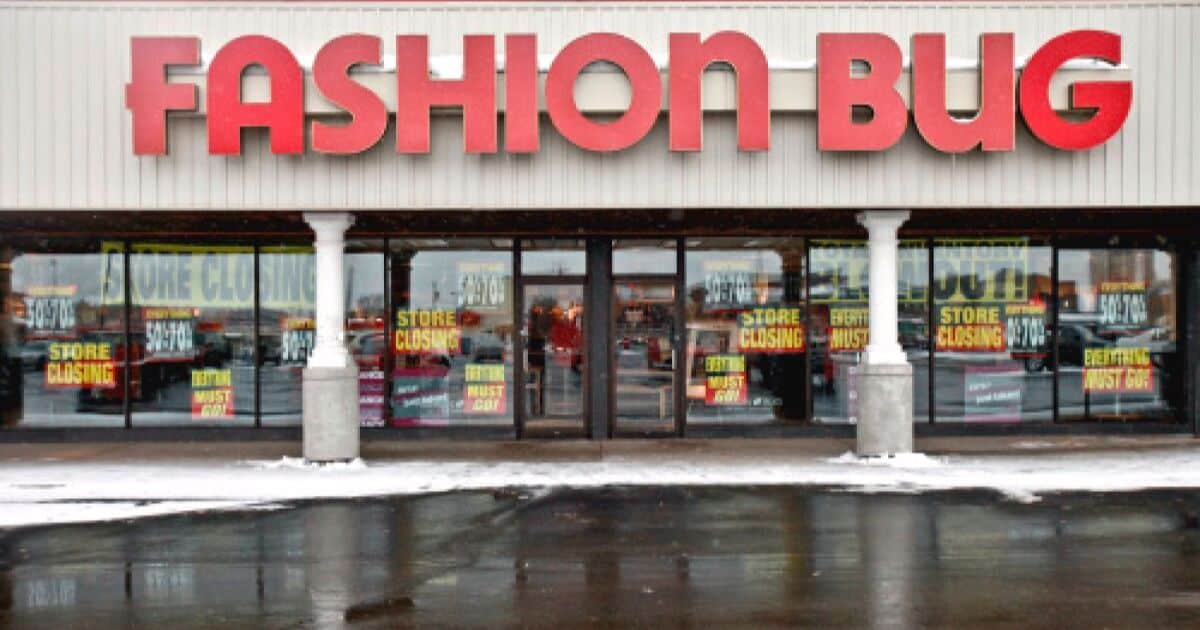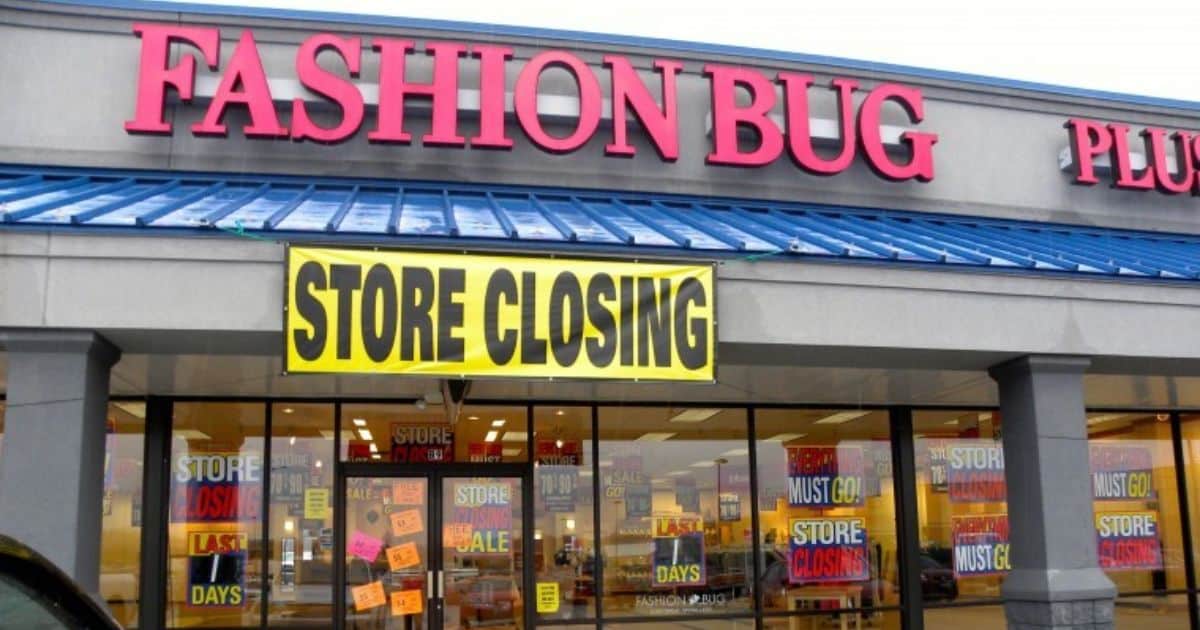Fashion Bug, the beloved retail chain known for its trendy and affordable clothing, succumbed to the challenges of the ever-evolving fashion industry. This article delves into the demise of Fashion Bug, exploring the signs of decline and the ultimate closure of the once-thriving brand. By examining the impact on the fashion landscape, we aim to provide a comprehensive understanding of when Fashion Bug went out of business and the implications it has had on the industry as a whole.
Key Takeaways
- Fashion Bug experienced a surge in popularity during the late 1990s and early 2000s, filling a gap in the market for trendy and affordable plus-size fashion.
- However, Fashion Bug struggled to adapt to changing consumer preferences and intense competition, leading to a decline in sales and reduced customer loyalty.
- The closure of Fashion Bug highlighted the need for retailers to innovate and adapt to evolving consumer preferences, particularly towards online shopping and sustainability in the fashion industry.
- The rise of fast fashion brands and the importance of personalization and customization in fashion were also key takeaways from Fashion Bug’s closure.
The Rise of Fashion Bug
Fashion Bug experienced a significant surge in popularity during the late 1990s and early 2000s. As a clothing retailer targeting women of all sizes, Fashion Bug filled a crucial gap in the market by providing trendy and affordable fashion options for plus-size individuals. The brand resonated with a diverse audience that desired to feel included and represented in the fashion industry.
Through its inclusive marketing campaigns and wide range of sizes, Fashion Bug fostered a sense of belonging among its customers. Research shows that during this period, the brand’s sales and customer base grew steadily, establishing Fashion Bug as a go-to destination for fashionable clothing that catered to all body types. The rise of Fashion Bug during this era reflects a shift in societal attitudes towards body acceptance and the increasing demand for inclusive fashion options.
Challenges in the Retail Landscape
The retail landscape continues to face numerous challenges, including shifting consumer preferences, increased competition, and evolving technological advancements. In today’s fast-paced world, consumers are constantly seeking convenience, personalized experiences, and value for their money. This has led to a shift in their preferences, with e-commerce and online shopping gaining significant popularity. As a result, brick-and-mortar retailers are struggling to adapt to this changing landscape and attract customers to their stores.
Moreover, the rise of online retail giants like Amazon has intensified competition, making it even more difficult for traditional retailers to survive. Additionally, the rapid advancement of technology has further disrupted the retail industry, with innovations like mobile shopping and augmented reality transforming the way consumers shop.
These challenges have posed significant obstacles for retailers, forcing them to rethink their strategies and find innovative ways to stay relevant in the ever-changing retail landscape. Transitioning into the subsequent section about ‘signs of decline: fashion bug’s struggles’, it is important to examine how these challenges impacted the once popular retail chain.
Signs of Decline: Fashion Bug’s Struggles
As consumer preferences shifted towards online shopping and brick-and-mortar retailers faced intensified competition, Fashion Bug struggled to adapt to the changing retail landscape, ultimately leading to its decline. The signs of Fashion Bug’s struggles were evident in various aspects of its operations:
- Outdated store formats: Fashion Bug failed to update its store layouts and designs, which became unappealing to modern shoppers seeking a more immersive and aesthetically pleasing experience.
- Limited online presence: While online shopping gained popularity, Fashion Bug lagged behind in establishing a strong online presence. This hindered its ability to reach a wider customer base and compete with e-commerce giants.
- Lack of brand differentiation: Fashion Bug failed to differentiate itself from other retailers, offering similar products and styles without a unique selling proposition. This resulted in a loss of customer loyalty and reduced foot traffic.
- Ineffective marketing strategies: Fashion Bug struggled to effectively market its products, failing to resonate with its target audience and capture their attention in a crowded retail market.
These factors cumulatively contributed to Fashion Bug’s decline and eventual closure.
The Final Days: Fashion Bug’s Closure
After years of struggling to adapt to changing consumer preferences and intense competition, Fashion Bug ultimately closed its doors. Despite being a popular destination for affordable fashion for many years, the retailer found it increasingly difficult to attract and retain customers in a rapidly evolving industry. As online shopping gained popularity and fast fashion brands emerged, Fashion Bug failed to keep up with the demand for trendy and affordable clothing.
Additionally, the company faced financial challenges, including a decline in sales and increased competition from other retailers. The closure of Fashion Bug had a significant impact on the fashion industry, as it highlighted the need for retailers to constantly innovate and adapt to changing consumer preferences. The rise of e-commerce and fast fashion brands further transformed the landscape, forcing traditional retailers to rethink their strategies in order to stay relevant and competitive.
Impact on the Fashion Industry
Fashion Bug’s closure served as a wake-up call for the fashion industry, highlighting the need for retailers to adapt to the changing preferences and behaviors of consumers. The impact of this closure has been felt across the industry, with several key lessons emerging:
- Evolving consumer preferences: Fashion Bug’s closure demonstrated the increasing demand for online shopping and the decline of traditional brick-and-mortar stores. Retailers must embrace digital platforms and enhance their online presence to cater to the changing consumer behavior.
- Rise of fast fashion: The closure of Fashion Bug also highlighted the growing popularity of fast fashion brands that offer trendy and affordable clothing. To stay relevant, retailers need to keep up with the fast-paced nature of the industry and offer affordable, stylish options.
- Importance of sustainability: The closure of Fashion Bug raised questions about the environmental impact of the fashion industry. Consumers are now more conscious about sustainable fashion and expect retailers to adopt eco-friendly practices.
- Personalization and customization: Lastly, Fashion Bug’s closure emphasized the need for retailers to offer personalized and customized experiences. Consumers are seeking unique and individualized fashion options, and retailers must adapt to this demand by providing personalized recommendations and customization options.
Frequently Asked Questions
What Was the Initial Reason Behind Fashion Bug’s Success in the Retail Industry?
Fashion Bug’s initial success in the retail industry can be attributed to its ability to cater to a wide range of customers, offering affordable and stylish clothing options. Additionally, its focus on customer service and personalized shopping experiences contributed to its popularity.
Did Fashion Bug Face Any Legal Controversies or Lawsuits During Its Operation?
Fashion Bug faced several legal controversies and lawsuits during its operation. These included allegations of discrimination, violation of labor laws, and trademark infringement. These legal challenges impacted the company’s reputation and financial stability.
How Did Fashion Bug’s Closure Affect the Job Market in the Regions Where Its Stores Were Located?
Fashion Bug’s closure had a significant impact on the job market in the regions where its stores were located. The sudden loss of employment opportunities led to increased unemployment rates and affected the local economies.
What Were Some of the Major Competitors of Fashion Bug in the Retail Market?
Some major competitors of Fashion Bug in the retail market included Lane Bryant, Dressbarn, and Catherine’s. These brands targeted similar customer segments and offered a range of affordable and fashionable clothing options.
Did Fashion Bug Have Any Plans for Expansion or Diversification Before Its Closure?
Fashion Bug had plans for expansion and diversification before its closure. The company aimed to tap into new markets and broaden its product range. Unfortunately, these plans were cut short when the business ceased operations.
Conclusion
In conclusion, Fashion Bug’s closure in [year] marked the end of an era for the fashion industry. Despite its initial rise to success, the brand faced numerous challenges in the ever-evolving retail landscape. From increased competition to changing consumer preferences, Fashion Bug struggled to adapt and ultimately succumbed to its downfall. This serves as a cautionary tale for other fashion retailers, highlighting the importance of staying relevant and agile in order to survive in an unforgiving market.

